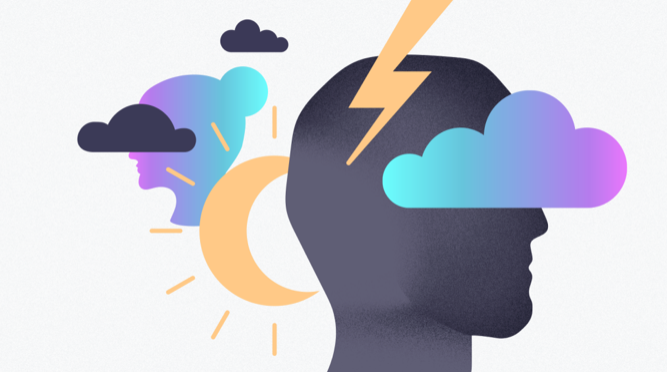I had never, ever heard the term ‘birth trauma’, until about a year after I’d had a traumatic birth experience delivering my firstborn. (The short version of events: An emergency caesarean under GA. Son came out perfect and healthy. But I couldn’t breathe post-surgery. My lungs didn’t work. I was put back to sleep, and woke up in ICU 10 hours later.)
When I did finally hear ‘birth trauma’ for the first time, I’m almost certain I had already been in a state of PTSD for more than 10 months. Almost a year living numbly, without ever realising it.
I had spent countless days in a darkened bedroom, rocking my freshly baked son and falling deeply in love with his face, while silent-assassin tears slid down mine.
While I tried to enjoy my new role as a mum, a Sad-Empty feeling skulked after me at all times.
It affected me physically, too. My body struggled under the weight of its fog, fading to an 85lb frame.
That first year of motherhood was, according to everyone around me, surely one of the happiest times of my life. And while I could imagine nothing more beautiful than this boy who smiled back up at me; nothing more perfect than his perfectly pudgy legs; nothing sweeter than the scent of his sweaty head nuzzled into my neck at the deepest hours of the day and night; something unsettling was causing me to falter. To pull away from social interaction. To struggle to connect with the beautiful women in my mother’s group. To feel numb. To worry.
I carried the Sad-Empty all those months without once ever realising, in even the slightest way, that it might be a sign something was amiss.
Shortly before I was due to return to work, a kind and gentle Health Visitor came to my home and listened to me tell a story about a strange Sad-Empty feeling. I cried. I recalled aloud my delivery experience.
She uttered ‘birth trauma’.
It took some time to feel back to my old self, for sure, but in that moment, relief washed over me. There was a reason. A why. There was a thing. Sad-Empty was something separate to me.
And temporary. And treatable.
It’s estimated that one in four women experiences mental health problems during pregnancy. And research shows that one in five new mums, and one in 10 dads, develops perinatal depression or anxiety.
Not only are many new mums and dads around the world struggling with their mental health, but many don’t realise something is wrong – it’s estimated almost 70 per cent of new mothers don’t recognise the signs and symptoms of perinatal mental illnesses such as anxiety and depression.
When new parents do realise they’re struggling, many choose not to discuss it with anyone – for a variety of reasons, including fear of stigma, fear of judgement, fear their baby might be taken away.
It’s World Maternal Mental Health Day today, and these are just some of the stats that have lead us at Moment Health to launch our #CHECKYOURSYMPTOMS campaign.
We’ve created two simple, easy-to-follow #CHECKYOURSYMPTOMS infographics – one for Anxiety, one for Depression – to highlight just some of the common signs and symptoms of these perinatal mood and anxiety disorders.
If these infographics help one parent, then we’re making a positive change. But we’re hoping these tools reach many, many more.
This World Maternal Mental Health Week, help us empower as many new parents as possible. Share these infographics – on Facebook, Twitter, Instagram. Email them to your sister-in-law. Show it to your colleague. Print it out and take it home to your partner.
The more we recognise the signs and symptoms of depression and anxiety, the better we’ll be able to see when someone – a partner, a sister, a brother, cousin, colleague, boss, ourselves – is struggling and in need of help. And gets that help. Early intervention increases the chance of successful recovery, so the faster it’s realised someone’s not okay, the better.
We all of us – men, women, parents or no – deserve the best opportunity to thrive. And when we do, our children, families, communities, and generations to come, have a better chance at thriving too.


